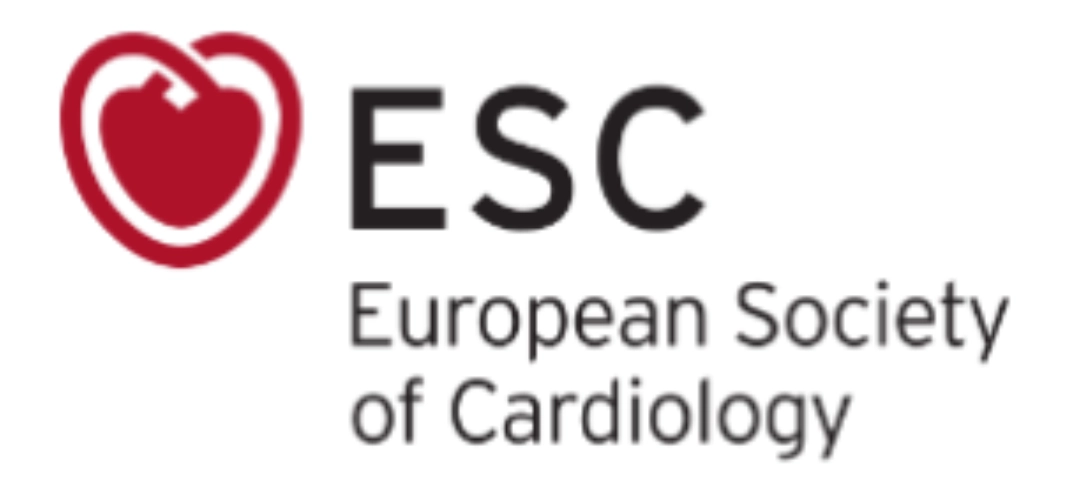ESC/EAS 2019 international guidelines
2019 ESC/EAS Guidelines for the management of Dyslipidaemias: lipid modification to reduce cardiovascular risk
| Recommendations | Class a | Level b |
CVD risk estimation |
||
| Total risk estimation using a risk estimation system such as SCORE is recommended for asymptomatic adults aged >40 years without evidence of CVD, DMCKD, FH, or LDL >4.9 mmol/L (>190 mg/dL). | I | C |
| High- and very-high-risk individuals may be identified on the basis of documented CVD, DM, moderate-to-severe renal disease, very high levels of individual risk factors, FH, or a high SCORE risk, and are a priority for advice and management of all risk factors. | I | C |
| Risk scores developed for the general population are not recommended for CV risk assessment in patients with DM or FH. | III | C |
Lipid analyses for CVD risk estimation |
||
| TC is to be used for the estimation of total CV risk by means of the SCORE system. | I | C |
| HDL-C analysis is recommended to further refine risk estimation using the online SCORE system. | I | C |
| LDL-C analysis is recommended as the primary lipid analysis method for screening, diagnosis, and management. | I | C |
| TG analysis is recommended as a part of the routine lipid analysis approach. | I | C |
| Non-HDL-C evaluation is recommended for risk assessment, particularly in people with high TG levels, DM, obesity, or very low LDL-C levels. | I | C |
| ApoB analysis is recommended for risk assessment, particularly in people with high TG levels, DM, obesity, or MetS, or very low LDL-C levels. It can be used as an alternative to LDL-C, if available, as the primary measurement for screening, diagnosis, and management, and may be preferred over non-HDL-C in people with high TG levels, DM, obesity, or very low LDL-C levels. | I | C |
Treatment goals for LDL-C |
||
| In secondary prevention for patients at very-high risk,anLDL-Creduction of>_50% from baseline and an LDL-C goal of <1.4 mmol/L(<55 mg/dL) are recommended. | I | A |
| In primary prevention for individuals at very-high risk, an LDL-C reduction of>_50% from baseline and an LDL-C goal of <1.4 mmol/L(<55 mg/dL) are recommended. | I | C |
| In patients at high risk, an LDL-C reduction of >_50% from baseline and an LDL-C goal of <1.8 mmol/L (<70 mg/dL) are recommended. | I | A |
Pharmacological LDL-C lowering |
||
| It is recommended that a high-intensity statin is prescribed up to the highest tolerated dose to reach the goals set for the specific level of risk. | I | A |
| If the goals are not achieved with the maximum tolerated dose of a statin, combination with ezetimibe is recommended. | I | B |
| For secondary prevention in patients at very-high risk not achieving their goal on a maximum tolerated dose of a statin and ezetimibe, a combination with a PCSK9 inhibitor is recommended. | I | A |
| For very-high-risk FH patients (that is, with ASCVD or with another major risk factor) who do not achieve their goal on a maximum tolerated dose of a statin and ezetimibe, a combination with a PCSK9 inhibitor is recommended. | I | C |
Drug treatment of patients with HTG |
||
| Statin treatment is recommended as the first drug of choice for reducing CVD risk in high-risk individuals with HTG [TGs >2.3 mmol/L(>200mg/dL)]. | I | B |
Management of patients with HeFH |
||
| It is recommended that a diagnosis of FH is considered in patients with CHD aged<55 years for men and <60 years for women, in people with relatives with premature fatal or non-fatal CVD, in people with relatives having tendon xanthomas, in people with severely elevated LDL-C levels [in adults >5 mmol/L (>190 mg/dL), in children >4 mmol/L (>150 mg/dL)], and in first-degree relatives of FH patients. | I | C |
| It is recommended that FH is diagnosed using clinical criteria and confirmed, when possible, with DNA analysis. | I | C |
| Once the index case is diagnosed, family cascade screening is recommended. | I | C |
| It is recommended that FH patients with ASCVD or who have another major risk factor are treated as very-high-risk, and those with no prior ASCVD or other risk factors as high-risk. | I | C |
| For FH patients with ASCVD who are at very-high risk, treatment to achieve a ≥ 50% reduction from baseline and an LDL-C <1.4mmol/L (<55mg/dL)is recommended. If goals cannot be achieved, a drug combination is recommended. | I | C |
| Treatment with a PCSK9inhibitor is recommended in very-high risk FH patients if the treatment goal is not achieved on a maximal tolerated statin plus ezetimibe. | I | C |
| In children, testing for FH is recommended from the age of 5 years, or earlier if HoFH is suspected. | I | C |
Treatment of Dyslipidaemias in older people |
||
| Treatment with statins is recommended for older people with ASCVD in the same way as for younger patients. | I | A |
| Treatment with statins is recommended for primary prevention, according to the level of risk, in older people aged ≤ 75 years. | I | A |
| It is recommended that the statin is started at a low dose if there is significant renal impairment and/or the potential for drug interactions, and then titrated upwards to achieve LDL-C treatment goals. | I | C |
Treatment of Dyslipidaemias in DM |
||
| In patients with T2DM at very-high risk, an LDL-C reduction of ≥ 50% from baseline and an LDL-C goal of <1.4 mmol/L (<55 mg/dL) is recommended. | I | A |
| In patients with T2DM at high risk, an LDL-C reduction of ≥ 50% from baseline and an LDL-C goal of <1.8 mmol/L (<70 mg/dL) is recommended. | I | A |
| Statins are recommended in patients with T1DM who are at high or very-high risk. | I | A |
| Statin therapy is not recommended in pre-menopausal patients with or without DM who are considering pregnancy, or not using adequate contraception. | III | C |
Management of patients with ACS |
||
| In all ACS patients without any contraindication or definite history of intolerance, it is recommended that high-dose statin therapy is initiated or continued as early as possible, regardless of initial LDL-C values. | I | A |
| If the LDL-C goal is not achieved after 4-6 weeks with the maximally tolerated statin dose, combination with ezetimibe is recommended. | I | B |
| If the LDL-C goal is not achieved after 4-6 weeks with the maximally tolerated statin dose, combination with ezetimibe is recommended. | I | B |
Lipid-lowering therapy for prevention of ASCVD events in patients with prior ischaemic stroke |
||
| Patients with a history of ischaemic stroke or TIA are at very-high risk of ASCVD, particularly recurrent ischaemic stroke, so it is recommended that they receive intensive LDL-C-lowering therapy. | I | A |
Treatment of dyslipidaemias in chronic HF or valvular heart diseases |
||
| Initiation of lipid-lowering therapy is not recommended in patients with HF in the absence of other indications for their use. | III | A |
| Initiation of lipid-lowering treatment is not recommended in patients with aortic valvular stenosis without CAD to slow progression of aortic valve stenosis in the absence of other indications for their use. | III | A |
Lipid management in patients with moderate-to-severe (Kidney disease outcomes quality initiative stages 3-5) CKD |
||
| It is recommended that patients with stage 3-5 CKD are considered to be at high or very-high risk of ASCVD. | I | A |
| The use of statins or statin/ezetimibe-combination is recommended in patients with non-dialysis-dependent stage 3-5 CKD. | I | A |
| In patients with dialysis-dependent CKD who are free of ASCVD, commencement of statin therapy is not recommended | III | A |
Lipid-lowering drugs in patients with PAD(including carotid artery disease) |
||
| In patients with PAD, lipid-lowering therapy—including a maximum tolerated dose of a statin, plus ezetimibe, or a combination with a PCSK9 inhibitor if needed—is recommended to reduce the risk of ASCVD events. | I | A |
Lipid-lowering drugs in patients with CIID |
||
| The use of lipid-lowering drugs only on the basis of the presence of CIID is not recommended. | III | C |
Lipid-lowering drugs in patients with SMI |
||
| It is recommended that SMIs are used as modifiers for estimating total ASCVD risk. | I | C |
| It is recommended that the same guidelines for the management of total ASCVD risk are used in patients with SMI as are used in patients without such disease. | I | C |
| It is recommended that in patients with SMI, intensified attention is paid to adherence to lifestyle changes and to compliance with drug treatment. | I | C |
ᵃClass of recommendation.
ᵇLevel of evidence.
ACS = Acute Coronary Syndrome(s); Apo = Apolipoprotein; ASCVD = Atherosclerotic Cardiovascular Disease; CAD = Coronary Artery Disease; CHD = Coronary Heart Disease; CIID= Chronic Immune-Mediated Inflammatorydiseases;CKD=Chronickidneydisease;CV=Cardiovascular;CVD=Cardiovasculardisease;DM=Diabetesmellitus;FH=Familial Hypercholesterolaemia; HDL-C = High-Density Lipoprotein Cholesterol; HeFH = Heterozygous FH; HF = Heart Failure; HoFH = Homozygous FH; HTG = Hypertriglyceridaemia; LDL-C = Low-Density Lipoprotein Cholesterol; MetS = Metabolic Syndrome; PAD = Peripheral Arterial Disease; PCSK9 = Proprotein Convertase Subtilisin/Kexin type 9; SCORE = Systematic Coronary Risk Estimation; SMI = Severe Mental Illness; TC = Total Cholesterol; TG = Triglycerides; TIA = Transient Ischaemic Event; T1DM = Type 1 DM; T2DM= Type 2DM
ᵃClass of recommendation.
ᵇLevel of evidence.
- Toujeo® European Summary of Product Characteristics. December 2015.
- Titration algorithm for people with T2DM is based on EDITION studies 1,2 and 3. Insulin dose is to be increased not more than every 3-4 days (based on the preceding 3 measurements).
- ADA Guidelines 2017.
- Bergenstal RM et al. Diabetes care 2017. 40:554-560.
- Adapted from Jeandidier N et al. Abstract at 50th Annual Meeting of the European Association for the Study of Diabetes 2014. Poster presentation, abstract 961.
- Peyrot M et al. Diabetes Med 2012;29:682–689.




.webp/jcr:content/ROSETTE%20summary%20(1).webp)
.webp/jcr:content/The%20explorer%20study%20(1).webp)